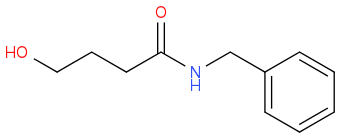Post by: AlphaScent on April 18, 2015, 05:17:06 PM
Post by: discodermolide on April 18, 2015, 05:29:03 PM
for example

Post by: AlphaScent on April 19, 2015, 04:40:42 PM
Yes you are correct. Pretty much like hydrolysis (aminolysis).
I looked at the question again and since the professor does not shy too much away from what we have been talking about I feel this is a better approach to the answer. Stork chemistry adapted from his synthesis of resperpine.
My first answer was adapted from Woodwards synthesis of resperpine. Since an imine and hydroxyl do not result from the reaction of A and B, my attached answer is more chemically sound.
Attached is my answer.
Post by: orgopete on April 20, 2015, 10:36:15 AM
Post by: AlphaScent on April 20, 2015, 12:41:51 PM
Please elaborate.
Post by: orgopete on April 20, 2015, 08:07:40 PM
Post by: AlphaScent on April 20, 2015, 08:53:56 PM
Post by: orgopete on April 21, 2015, 07:57:46 AM
Post by: Dan on April 21, 2015, 09:19:00 AM
I thought sugars remained cyclic. Reactions on the carbonyl open the ring, but I'd consider this a capture of the open form. I think reactions on the hydroxyl can occur without opening. You can check this to see if my memory is correct.
This is definitely the case for sugars. For example, treatment of a sugar hemiacetal with a silyl chloride will normally give you the cyclic silyl acetal (not the open chain aldehyde/silyl ether).
This is a different case, but despite hydration equilibria of aromatic vs aliphatic aldehydes (aromatic hydrate less readily) there will still be an appreciable amount of hemiacetal form [in fact, this paper (http://pubs.acs.org/doi/pdf/10.1021/jo00318a015) estimates 7:1 in favour of the hemiacetal]. I also think that products arising from tosylation of the hemiacetal OH will cause major problems in this synthesis.